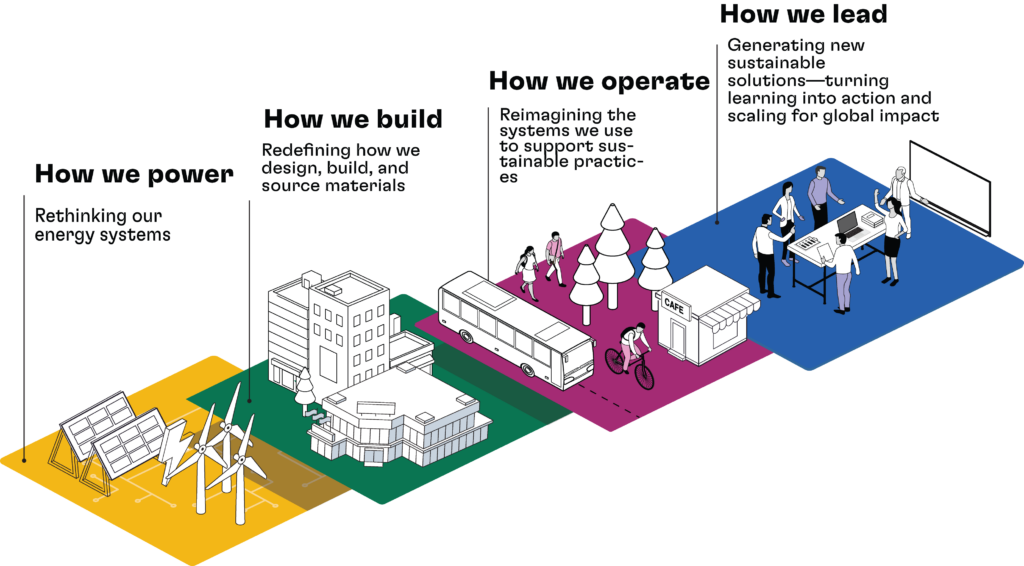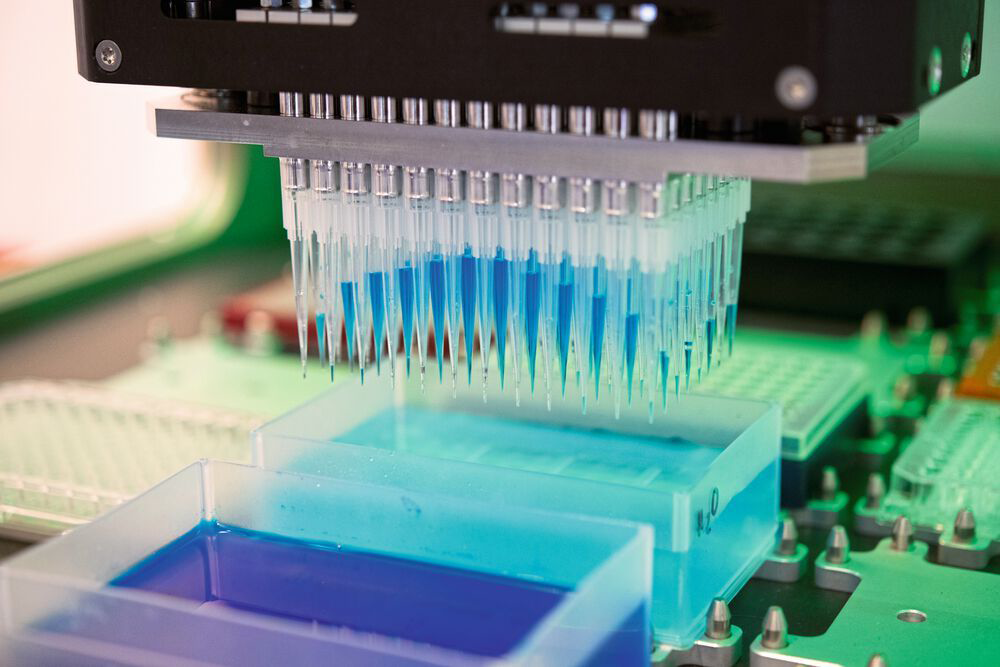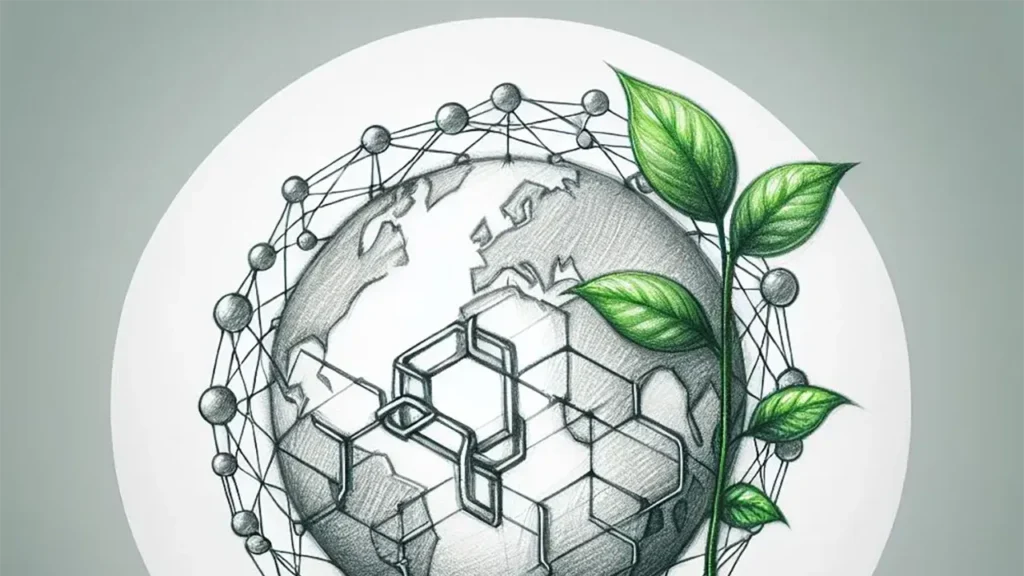Table of Contents
Scientific research is essential for technological and medical advances, but it comes at a cost: traditional laboratories consume vast amounts of energy, water and resources, contributing significantly to environmental degradation. However, a new movement is emerging – Green Labs – which implement sustainable practices to reduce waste, minimise carbon footprints and optimise energy efficiency. This blog post explores:
- The environmental impact of conventional labs
- Key sustainable strategies for labs
- Real-world examples of green labs leading the change
- Steps researchers and institutions can take to transition to sustainability

Harvard’s Sustainability Action Plan
The environmental impact of traditional laboratories
Laboratories are among the most resource-intensive facilities in any institution, consuming up to 10 times more energy per square foot than typical office spaces (Harvard Office for Sustainability). This excessive energy consumption is primarily due to the continuous operation of high-powered laboratory equipment and inefficient facility management.
Key Issues:
- High Energy Consumption: Laboratory equipment such as ultra-low temperature freezers, centrifuges, and fume hoods operate around the clock to maintain research conditions. Ultra-low temperature freezers, for instance, consume as much energy as an entire household in a single day. Additionally, fume hoods, which are essential for protecting researchers from hazardous fumes, require constant airflow, significantly increasing ventilation energy costs. Without efficient energy management, laboratories can quickly become one of the largest energy drains within a research institution.
- Excessive Water Use: Many laboratories still rely on single-pass cooling systems, which use water once before discarding it down the drain. This practice results in thousands of liters of wasted water daily per laboratory. In addition, autoclaves and other sterilization equipment require massive amounts of water, contributing further to the excessive consumption. Without implementing water conservation strategies, such as closed-loop cooling systems or water-efficient sterilizers, laboratories can be responsible for an immense strain on freshwater resources.
- Large Amounts of Hazardous and Non-Recyclable Waste: Laboratories generate vast quantities of waste, much of which is hazardous or non-recyclable. This includes chemical byproducts, plastic consumables (such as pipette tips and petri dishes), and disposable gloves, all of which contribute to pollution. Many labs rely heavily on single-use plastics due to contamination concerns, but without proper recycling programs, these materials end up in landfills or incinerators, further harming the environment. The improper disposal of chemicals can also lead to soil and water contamination, posing significant ecological risks.
Key strategies for sustainable laboratories
One of the most important measures for sustainable laboratories is the use of energy-efficient equipment and infrastructure. Switching to ENERGY STAR-certified laboratory equipment can reduce electricity consumption by up to 50%. Additionally, replacing outdated fume hoods with Variable Air Volume (VAV) systems significantly lowers energy use. Smart HVAC systems (heating, ventilation, and air conditioning) further optimize temperature and airflow regulation, reducing overall energy consumption.
Another key aspect is waste reduction and recycling programs. Laboratories can establish initiatives to recycle plastics, glassware, and other materials. Using reusable lab supplies, such as glass pipettes and refillable reagent bottles, also helps minimize waste. Moreover, encouraging chemical-sharing programs can reduce redundant purchases, lowering both waste and costs.
Water conservation is another crucial factor in sustainable laboratory operations. Replacing single-pass cooling systems with closed-loop water recycling systems significantly decreases water usage. Additionally, low-flow faucets and water-efficient autoclaves help prevent unnecessary water waste.
By implementing these strategies, laboratories can not only improve their environmental footprint but also reduce long-term operational costs and promote sustainable practices.

Real-world examples of green labs leading the change
1. University of colorado boulder green labs program
One of the pioneering programs in sustainable lab practices, CU Boulder has implemented energy-efficient freezer programs, shut-the-sash campaigns for fume hoods, and comprehensive recycling initiatives (CU Boulder Green Labs).
2. My green lab initiative
My green lab, a nonprofit organization, has developed the ACT Label, the first environmental impact factor label for laboratory products, helping researchers make more sustainable purchasing decisions (My Green Lab).
Steps to transition towards a green lab
- Conduct an energy and waste audit to identify key areas for improvement.
- Upgrade to energy-efficient equipment and adopt sustainable procurement practices.
- Educate lab personnel on sustainability best practices.
- Engage with organizations like My Green Lab to certify and improve lab sustainability.
- Collaborate with sustainability offices at universities and research institutions.
The role of digitalization and smart technologies in green labs
One crucial aspect missing from the article is the role of digitalisation and smart technologies in making laboratories more sustainable. The integration of artificial intelligence (AI), the Internet of Things (IoT) and automation can significantly improve energy efficiency and reduce resource consumption in laboratories. Smart sensors and real-time monitoring systems can track energy and water usage and provide actionable insights to optimise resource allocation. AI-driven predictive maintenance can prevent unnecessary equipment operation, extending the life of lab equipment and reducing overall energy costs. In addition, digital lab management systems can help reduce paper waste by replacing traditional documentation with electronic lab notebooks (ELNs). Incorporating these technologies into sustainable laboratory initiatives can accelerate the transition to a truly green research environment.
Wrap-up
Green Labs are shaping the future of scientific research, demonstrating that innovation and sustainability go hand in hand. By adopting eco-friendly practices, laboratories can minimize their environmental footprint without sacrificing scientific excellence. As more institutions embrace these initiatives, the global scientific community takes a significant step toward a greener, more sustainable future. Is your research institution or lab ready to make a difference? Join the movement and be part of the transformation in scientific research!
Literature
- Harvard’s Sustainability Action Plan: https://sustainable.harvard.edu/our-plan/
- Building a Global Culture of Sustainability in Science: https://www.mygreenlab.org/
- CU Green Labs Program: https://www.colorado.edu/ecenter/programs/cu-green-labs-program
- Journal of Environmental Management: https://www.sciencedirect.com/journal/journal-of-environmental-management



